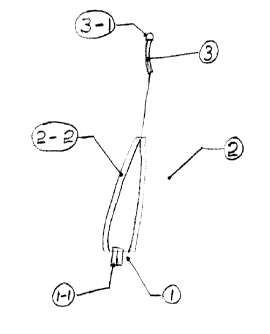Some of the information on this Web page has been provided by external sources. The Government of Canada is not responsible for the accuracy, reliability or currency of the information supplied by external sources. Users wishing to rely upon this information should consult directly with the source of the information. Content provided by external sources is not subject to official languages, privacy and accessibility requirements.
Any discrepancies in the text and image of the Claims and Abstract are due to differing posting times. Text of the Claims and Abstract are posted:
| (12) Patent Application: | (11) CA 2365134 |
|---|---|
| (54) English Title: | PHOTOGRAPHIC PRODUCT TENT |
| (54) French Title: | TENTE POUR PHOTOGRAPHIER DES PRODUITS |
| Status: | Dead |
| (51) International Patent Classification (IPC): |
|
|---|---|
| (72) Inventors : |
|
| (73) Owners : |
|
| (71) Applicants : |
|
| (74) Agent: | |
| (74) Associate agent: | |
| (45) Issued: | |
| (22) Filed Date: | 2001-12-17 |
| (41) Open to Public Inspection: | 2003-06-17 |
| Availability of licence: | N/A |
| (25) Language of filing: | English |
| Patent Cooperation Treaty (PCT): | No |
|---|
| (30) Application Priority Data: | None |
|---|
When photographing products of a highly reflective nature, it is difficult to
eliminate
unwanted reflections. It is also common to diffuse light falling on it,
through a translucent
material in an attempt to soften light and shadows. This invention allows the
photographer to set
up the product, i.e.: a chrome teakettle or toaster, inside a conical tent
with one opening located
along the side for the camera lens, minimizing unwanted reflections,
highlights and shadows.
The only solid support needed in the structure is in the base of the cone. The
support is
tubular and rigid in form, though, still light and flexible for ease of
handling and connected at the
two ends to form a hoop with the use of brass garden hose couplings
permanently placed. The
material used for the support may be anything able to meet the criteria
stated. The support hoop
is then fed through a 2 inch diameter casing stitched at the base of the cone.
Once in the base of
the cone and fastened together with the couplings, a working diameter
(approximately 50 inch
diameter) is formed.
The conical shape allows for the lack of defined edges, i.e.: square,
rectangular or
cylindrical shapes, which normally cast shadows on the product. The cone has
one seem stitched
approximately halfway down the opening from the point. The remainder of the
opening is closed
with white Velcro so as to blend in with colour of the fabric used and to
fasten snugly around the
camera lens. The conical shape is then suspended by the use of a suspension
strap stitched to the
point of the cone with a metal D-ring at the other end. When the strap is fed
through this D-ring,
a loop is formed to enable the strap to hook to a support arm, usually
connected to a support
device such as a light stand or tripod. The material used must be a
translucent white fabric as
white is typically used and easiest to work with.
Note: Claims are shown in the official language in which they were submitted.
Note: Descriptions are shown in the official language in which they were submitted.

For a clearer understanding of the status of the application/patent presented on this page, the site Disclaimer , as well as the definitions for Patent , Administrative Status , Maintenance Fee and Payment History should be consulted.
| Title | Date |
|---|---|
| Forecasted Issue Date | Unavailable |
| (22) Filed | 2001-12-17 |
| (41) Open to Public Inspection | 2003-06-17 |
| Dead Application | 2005-12-19 |
| Abandonment Date | Reason | Reinstatement Date |
|---|---|---|
| 2004-12-17 | FAILURE TO PAY APPLICATION MAINTENANCE FEE |
| Fee Type | Anniversary Year | Due Date | Amount Paid | Paid Date |
|---|---|---|---|---|
| Application Fee | $150.00 | 2001-12-17 | ||
| Maintenance Fee - Application - New Act | 2 | 2003-12-17 | $50.00 | 2003-10-22 |
Note: Records showing the ownership history in alphabetical order.
| Current Owners on Record |
|---|
| DI TULLIO, ALBERTO C. |
| Past Owners on Record |
|---|
| None |